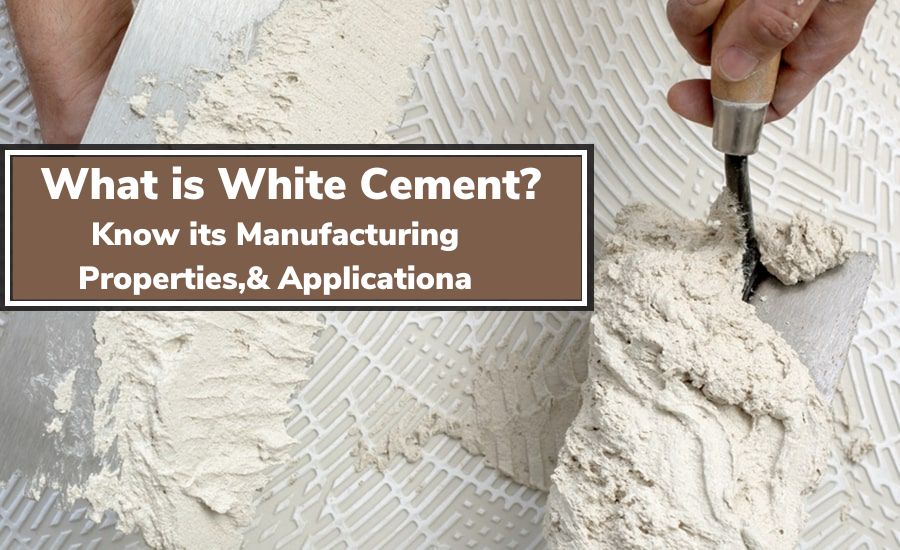White cement is just like Portland cement; however, the simplest distinction is withinside the color and fineness. The color white cement is renowned for its raw components and manufacturing technique.
Manufacturing of White Cement
White cement preparation is comparable to grey cement preparation, but the inclusion of raw material is an important aspect of the process. The oxides of chromium, manganese, iron, copper, vanadium, nickel, and titanium give grey cement its color. These raw materials are used in lower amounts in the production of white cement.
Limestone and clay are important raw materials used in the production of white cement. The manufacturing process is similar to that of OPC cement; the only variations are that the heat required for raw material combustion is high, and the fineness is similarly high. White cement, after adding pigments, produces crisp, vibrant colors for light pastels.
Mix designs for white or colored concrete are calculated based on the effect of each ingredient on the color of the concrete:
a. Cement kind and colour
c. Pigment type and addition
c. Admixture kind and addition
d. Fine and coarse mixture type, gradation, colour, and cleanliness
f. Consistent proportions, with a consistent water-cement ratio.
White Portland Cement Properties
The first setting time is 100 minutes.
White cement has a fineness of 395 kg/m².
White cement has an 87% brightness.
White density has a compact density of 3150 kg/m³.
White cement has a bulk density of 110 kg/3.
Compressive strength after one day is 21 MPa, after two days it is 38 MPa, after seven days it is 61 MPa, and after 28 days it is 74 MPa.
Usage of White Cement
The following are some uses for white Portland cement:
It is commonly utilized for large construction projects and decorative work. This cement is utilized in the decoration and design of buildings.
It is used in colored concrete with inorganic pigments to produce brilliantly colored concretes and mortars. It improves surface finishing.
Because of its whiteness, it is used in architectural beauty, interior and external decorations, flooring, and ornamental concrete items such as idols, whereas grey cement is widely used in construction.
It is also used on highways because of its high reflectiveness, which provides the finest visibility to highway medians. It can be used for tile grouting and crack filling.
It is widely used in the manufacture of huge numbers of precast members. Beautiful precast members are ready for the use of white Portland cement.
It is also commonly used to create cast stones with a pleasing look.
Because it is a relatively expensive kind of cement, it is only used on occasion.
Benefits of White Portland Cement
The following are some of the advantages of white Portland cement:
1. This cement is used for building decoration and design.
2. It provides a more even and smooth surface finish.
3. It is ideal for tile grouting and crack filling.
4. These cements are typically waterproofed.
5. It is a good light reflector.
6. White cement constructions are strong enough to withstand high temperatures.
The following are the raw materials for white cement concrete:
Cement:
White cement is available in both bulbs and bags; however, neither should be placed in direct contact with the earth.
To protect the white cement bags from the elements, they should be placed on pallets and kept away from the ground.
Because of its low soluble chromium content, white cement can be stored for at least 6 months if kept in a suitably dry environment.
Aggregates:
White cement should be made with aggregates such as white marble, white granite, and crushed calcined flint.
The color of coarse anklets is crucial in the final appearance of white concrete, as is the selection of small aggregates, particularly filler particles less than 0.25 mm.
To eliminate shadowing of the completed products, special attention is taken to ensure that the aggregate mixture is continuous.
Conclusion:
White cement concrete floors reflect more light than light grey concrete floors, lowering the energy required for interior lighting.
The reflectivity is especially noticeable in wet areas since grey concrete darkens when wet.

